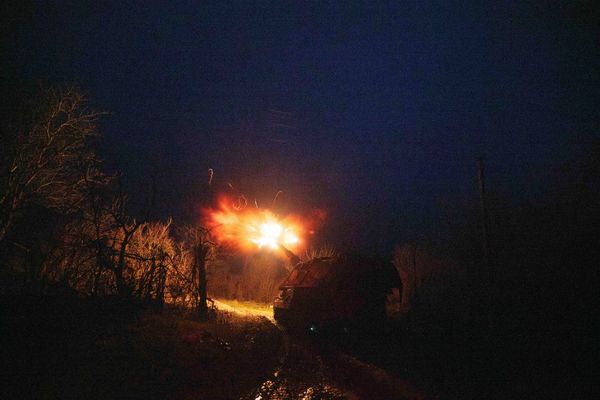
Two intertwined linden trees frame the front door of Carla Cammilla Hjort’s home in the Danish countryside. Planted many years ago, the trunks have anthropomorphised into kindly doormen; to step under their branches is to enter into a secluded realm where creativity and community are the order of the day.
During her 20s, Hjort travelled the world, living among like-minded people in small, creative communities. “I remember thinking one day, if I ever have the money, I’d like to find a place and create my own community space.” On her return to Denmark, Hjort began a career as a creative and cultural entrepreneur. She founded Copenhagen’s Trailerpark Festival before becoming the part-owner and chairwoman of Space10, Ikea’s global innovation lab. Most recently, she has launched the Re:Arc Institute, a non-profit initiative that works at the intersection of architecture and climate action.
The urge to create her own community – “a place where production, delivery and deadlines are not the most important thing; a retreat where decoupling, research and immersion are in focus” – remained undimmed. Six years ago, Hjort saw a post on Facebook that “created renewed energy in an old dream”: an 18th-century whitewashed farm was for sale, 25 miles south of Copenhagen.

The farm, named Østergaard, is on the west coast of Stevns, close to the world heritage Site of Stevns Klint – a span of natural white chalk and limestone cliffs. “I thought, ‘If it’s as beautiful in real life as it is in the photos, then that’s it!’”
The farm is at the end of a straight avenue of oaks. Cornfields bristle on either side. A central, grassy strip leads the eye directly down the track towards Østergaard. “It’s like a little paradise,” Hjort explains. “It’s not an island, but it feels like one, because it’s completely encircled by trees.” The decision to buy the farm was “a complete no-brainer” for Hjort: “I asked where I could sign before the estate agent had finished showing me around,” she says.
The main farmhouse was built in 1777 with half-timbered walls and a steep thatched roof now covered in emerald-green moss. Curved bedroom windows peep out from under it at intervals. The main building is surrounded by barns that form a central, cobbled courtyard. Hjort immediately saw the potential to create what she had long imagined.

The previous owner, a self-taught craftsman and furniture restorer, had sensitively restored the fabric of the building. He spent three years replacing the wooden flooring with wide planks cut from trees grown in the farmhouse gardens. He added wood panelling to the walls in the main living room and remade the front door based on a 100-year-old photograph of the farm. He sold Østergaard because he needed to down-size, which meant several large pieces of furniture were left in situ along with an attic full of unfinished projects. To an extent, the farm furnished itself.
Steadily, Hjort has made her own mark on the main four-bedroom farmhouse, where she now lives with her girlfriend. (The couple made the move from Copenhagen at the start of the pandemic.) Original features blend seamlessly with Hjort’s collection of vintage rugs, multicoloured textiles and mementoes gathered from her global travels.
In the monochrome kitchen, Hjort has preserved the beautiful porcelain sink and the original cast-iron bread oven (“I’ve been told it’s the oldest oven in Denmark”). The chunky, mint-green farmhouse table in the kitchen and the long, narrow table in the adjoining dining room both came with the house and remain steadfastly in situ.

In the living space, the handmade panelled walls have been painted soft green – a colour that echoes the canopy of leaves outside. Vintage Moroccan textiles, flea-market finds and a flash of midcentury Danish design combine to create Hjort’s country-creative aesthetic. “We wanted to stay true to the feeling of the old farmhouse,” Hjort explains. “But we’ve combined that with more contemporary colours and textiles to find a balance.”
Upstairs under the eaves, the whitewashed bedrooms have far-reaching views of the surrounding cornfields. Colour comes from the textiles: Moroccan carpets, vintage quilts and repurposed Indian saris. The smaller pieces of furniture – bedside tables and chairs – were mostly found in the attic. The walls are a repository of souvenirs including Costa Rican masks, dreamcatchers and Indian wall hangings, while the artwork includes relics from past residencies, where guests have traded their work for a temporary, contemplative corner of Østergaard.

Beyond her own whitewashed walls, Hjort has transformed the barns and outbuildings into residency space for a revolving cohort of creatives. A former stable building with direct access from the main house has become a communal bathroom and sauna. The pigsty has been given a coat of textured green chalk paint and is now a shared library, lounge and co-working space. Cleverly, Hjort has kept the stone feeding trough, adding some mattresses and vintage textiles to create a daybed that runs the length of the room. A yoga space and a ceramic and woodworking studio have also been added. In the garden, a “wild wine bar” has been built into the branches beneath a bright yellow treehouse. There’s even a pink outdoor kitchen that has been cast in pigmented limestone by a young German designer who spent the summer here.
In addition to the ongoing creative residencies, Hjort runs an annual Open Farm Festival. “We have 200 people camping in the garden and a programme of talks, workshops, performances and communal dinner experiences.” Importantly, the locals are on board, too. Hjort has enlisted the support of both neighbours: a retiree who tends the garden and a local producer (“a one-woman army”) who supplies them with fresh organic veg, eggs and meat. For two days and two nights, the creative community Hjort envisaged more than two decades ago gathers at Østergaard. “It’s complete mayhem,” she says with glee.







